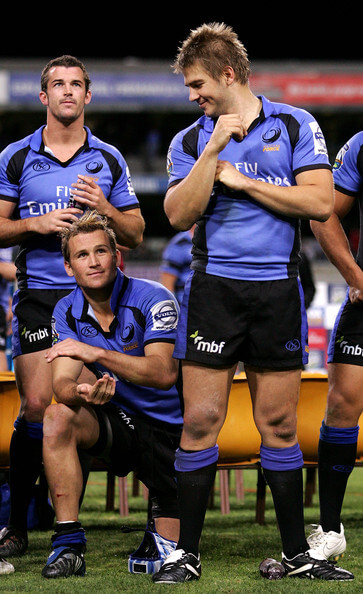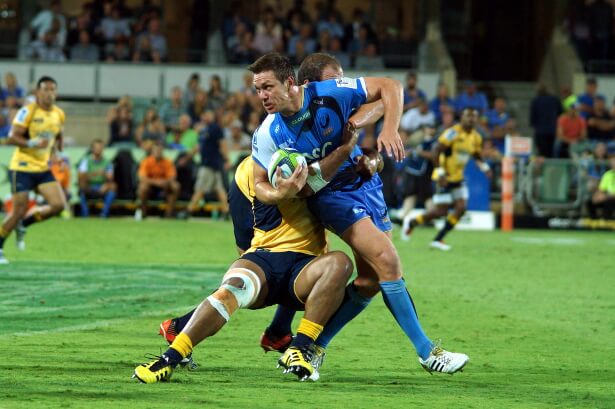With the Force once again on a collision course with the arse end of the Super Rugby ladder, their viability as an organisation has become a major talking point.
The first and most prominent shot was fired by former Western Force and NSW Waratahs CEO Greg Harris, who argued the Force should be replaced with a team in Western Sydney. Now it seems the ARU is set to absorb part of the Force’s back office, in the face of continued financial trouble.
With Greg coming on the podcast this week (see below), I thought it was a good time to have a look at this issue in a bit more depth.
The downhill slide
The Force are a failing organisation, and have been for at least 6 years. They have made consistent losses of more than $500k a year, and with the exception of a faint glimmer of hope in 2014 they haven’t been within a bull’s roar of the finals. This doesn’t look like changing any time soon, and their last two losses away from home have been at best insipid, and at worst embarrassing.

They haven’t always been like this, though. In their early years they were relatively successful both on and off the field, turning healthy profits in 2007 and 2008 and developing a number of big-name Wallabies (eg James O’Connnor, David Pocock, Ben McCalman, Digby Ioane). They never got above mid-table, but success looked to be just around the corner.
One of the keys to this success, and subsequent failure, has been revenue through sponsorship. ‘Receipts from members and sponsors’ contributed $16.6m in 2007, but in 2014 had fallen to just over $10.8m. You don’t need to be a financial genius to realise that drop-off in revenue will have a serious impact on your ability to attract the best players. When this is combined by their geographic isolation from the primary development areas of Sydney and Brisbane then things start to get ugly.
And when the rugby program starts failing too, shit gets really nasty. Why would anyone go to the Force now? Since Ben McCalman made his debut way back in 2010, just three Force players have made their Wallaby debuts (Nick Cummins, Nathan Charles, Tetera Faulkner), and none of those have become established players. In that same period, 15 Brumbies have pulled on the Gold shirt for the first time. They aren’t winning, they aren’t developing Wallabies.
With an ARU takeover now on the cards and the WA economy in the slow lane, there is really no chance of a cheeky $6 million popping back into the Force bank account. So they are essentially stuck in the mud, thousands of miles from the Eastern Seaboard.
Player development
The performance of the Force is just one aspect to consider when looking at rugby in WA. The development of local players was a key aim of the ARU when the Force was established, and would be one of the main reasons to keep the franchise alive. It would help mitigate the tyranny of distance that separates them from the major nurseries on the East Coast by having their own source of talented youngsters.

Unfortunately there has been no real progress made in developing local juniors into Wallaby challengers. While proponents may point to local players like Kyle Godwin, Dane Haylett-Petty and Kieran Longbottom, there is no evidence of any real growth in WA’s ability to produce top-level talent.
Since 2012, only one Western Australian has represented the Australian Schoolboys (Nick Jooste in 2015, who has since signed with the Brumbies). This is the period we should have been seeing growth, with the current generation of local schoolboys having been exposed to the Force throughout their formative rugby-playing years. But the Force clearly haven’t made a significant impact – the WA Schoolboy team continues to struggle, and have never challenged the finals of the National Schoolboy Championships. the Force under 20 side is yet to win a game this year (though they have been competitive). In my view, this is the biggest failure of the Western Force’s time in Super Rugby.
Total numbers playing in WA have improved, however. In 2010 just 7,000 locals had played the game in the previous year, while in 2014 that number was up to over 19,000. This is a real positive, and we can only hope this growth continues. But considering NSW (as of 2013) contributed more than 100,000 players, it is still a drop in the bucket of the overall participation.
There is no doubt rugby in WA is stronger than it was a decade ago. But the gains probably haven’t been as large as the ARU were hoping for, and may not be enough to justify the effort and expenditure in maintaining the Force in Perth.
Western Sydney bound?
The most obvious location to move the side to would be Western Sydney. With a large population and a healthy interest in the rugby codes, the idea makes plenty of sense. As Harris put it, “Sydney and Brisbane are where your major stakeholders are”. They wouldn’t face the issues of distance that the Force do, and have a richer local talent pool to draw from.
But if you drill a little deeper, the notion of a Western Sydney Super side presents plenty of challenges. Since I keep getting teased for writing articles that are too wordy, I’ll go rapid-fire:
- Is the talent really there? Parramatta and Penrith are cellar-dwellers in local Grade, and the Western Sydney Rams haven’t exactly set the NRC alight.
- Where would they play? Parramatta Stadium is an obvious choice, but it’s about to be knocked down and rebuilt. So that presumably would mean a few seasons at Homebush, which would please nobody.
- Is the support there? The Waratahs are the only team in town, and have struggled for crowds even in their last few (wildly successful) seasons. Not to mention the lack of support for the aforementioned Penrith, Parramatta and Rams. Local support is one of the real strengths of the Force, still pulling consistent crowds of more than 10,000 people despite years of failure on the field.
- The Waratahs would have to rebrand totally. They can’t be the NSW Waratahs anymore. Considering that name has 100+ years of history, it’s kind of a big deal.
- It would cut into the Waratahs crowds, and sponsorship base.
- It’s already a crowded market, with the Wanderers, Giants, Panthers, Eels and Tigers having strong support.
Just a few issues off the top of my head. These challenges are by no means insurmountable, but added up it means the idea of a Western Sydney side is far from a lay-down misere.
Talent base in Australia

The ugly truth at the centre of this whole debate is that Australian rugby just doesn’t have the talent base to support five Super sides. You can move the Force wherever you want, but you still will have the same set of issues. A Western Sydney side may flourish on the field, but that would just come at the expense of other Aussie teams. You’d still have two struggling sides each year, as there just aren’t enough good players to go around.
But with the broadcast deal locking us into five sides for the foreseeable future, the ARU are faced with a decision between the devil they know way out West or the devil they don’t closer to home.
Ultimately I think the ARU would be wise to persist with the Force for a few more years, giving the rugby program a good shake-up and trying to attract a world class coach who can turn things around. They need to create a few ‘pull’ factors for players, and a quality rugby program that turns good players into Wallabies is easily the best way to go about it.
But if nothing changes in that time, I think it would be worth taking a good, hard look at a relocation to a redeveloped Parramatta Stadium.
Until then, it’s just one more headache for Bill Pulver and the ARU. A month is a long time in Rugby, and the World Cup Final now seems like it was years ago.
